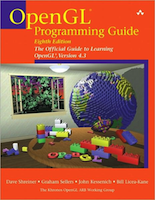I've been quite busy in the last three months because I applied for a PhD position at the Delft university of technology
This is the description of the position which I applied for:
The PhD/PostDoc position will be part of the Population Imaging Genetics project (stw-imagene) that involves linking observations on the human genome to observations in imaging data. Novel, genome-wide sequencing approaches combined with large-scale population imaging studies open up unprecedented possibilities for discovering the cause of a disease and relating it to its anatomical and functional consequences.After some Skype interview and a visit to Delft they have chosen me for the job! :)
The exact nature of the features (markers) that have the highest correlation with the clinical outcomes under study is by definition hard to predict. Due to the magnitude and heterogeneity of the data, as well as the nonspecific nature of the features that are being sought, this is a complex and laborious process.
We envision a new class of visual analysis techniques that enable the structured and interactive visual exploration of population imaging data. With these techniques, patterns and high-potential hypotheses can be flexibly derived from population imaging data, aiding both the derivation of insight and the search for predictive data features.
The main aim of this project is to develop and evaluate a new, interactive visual analysis approach that enables the extraction of patterns and high-potential hypotheses from the irregular and complex population imaging research data.
New insights into the mechanisms behind the clinical outcome of a population can be extracted by augmenting the human visual system with interactive visualization and coupled feature extraction techniques.
I'm really excited and I'm looking forward for the opportunity to work in the computer graphics and visualization group of one of the best university in Europe!



























